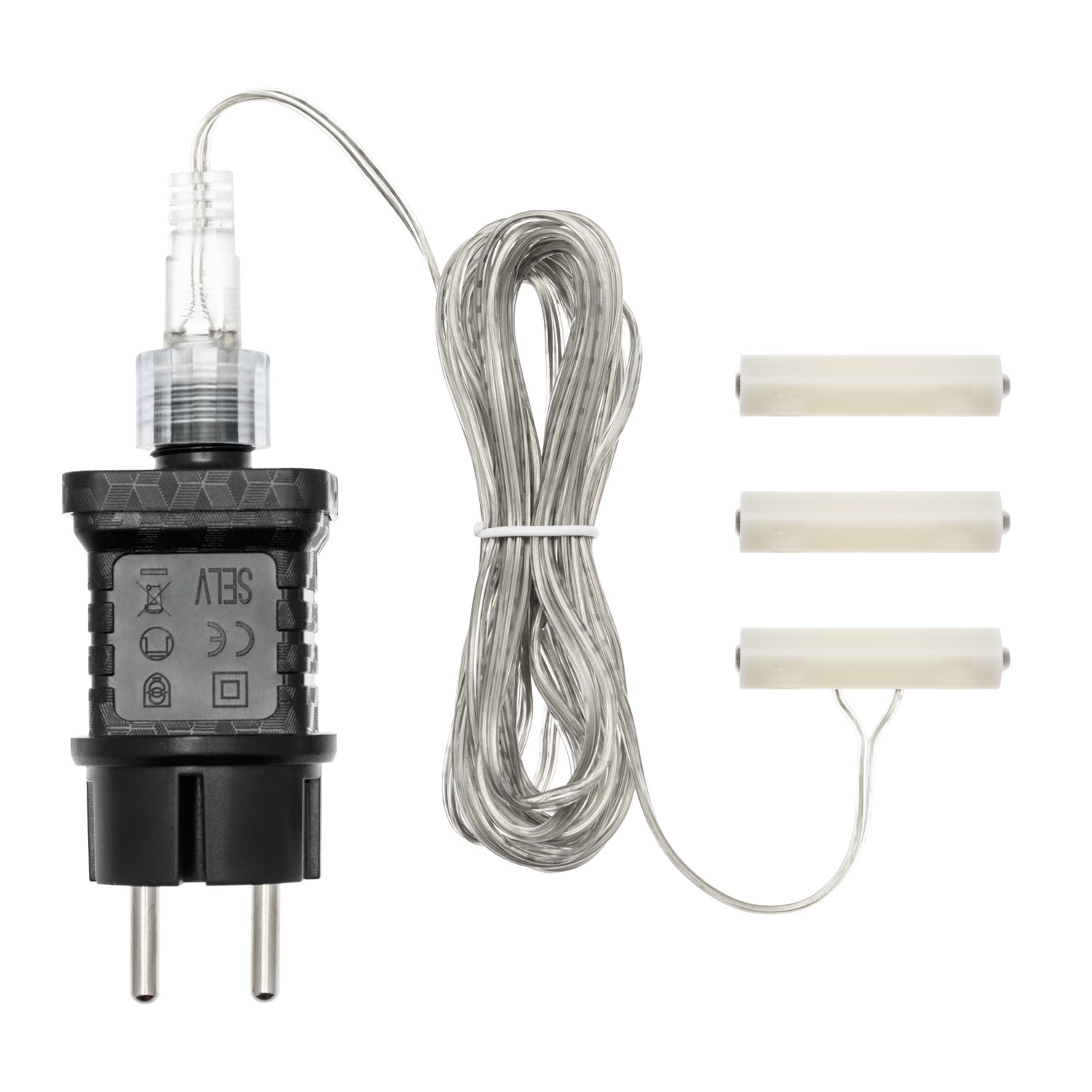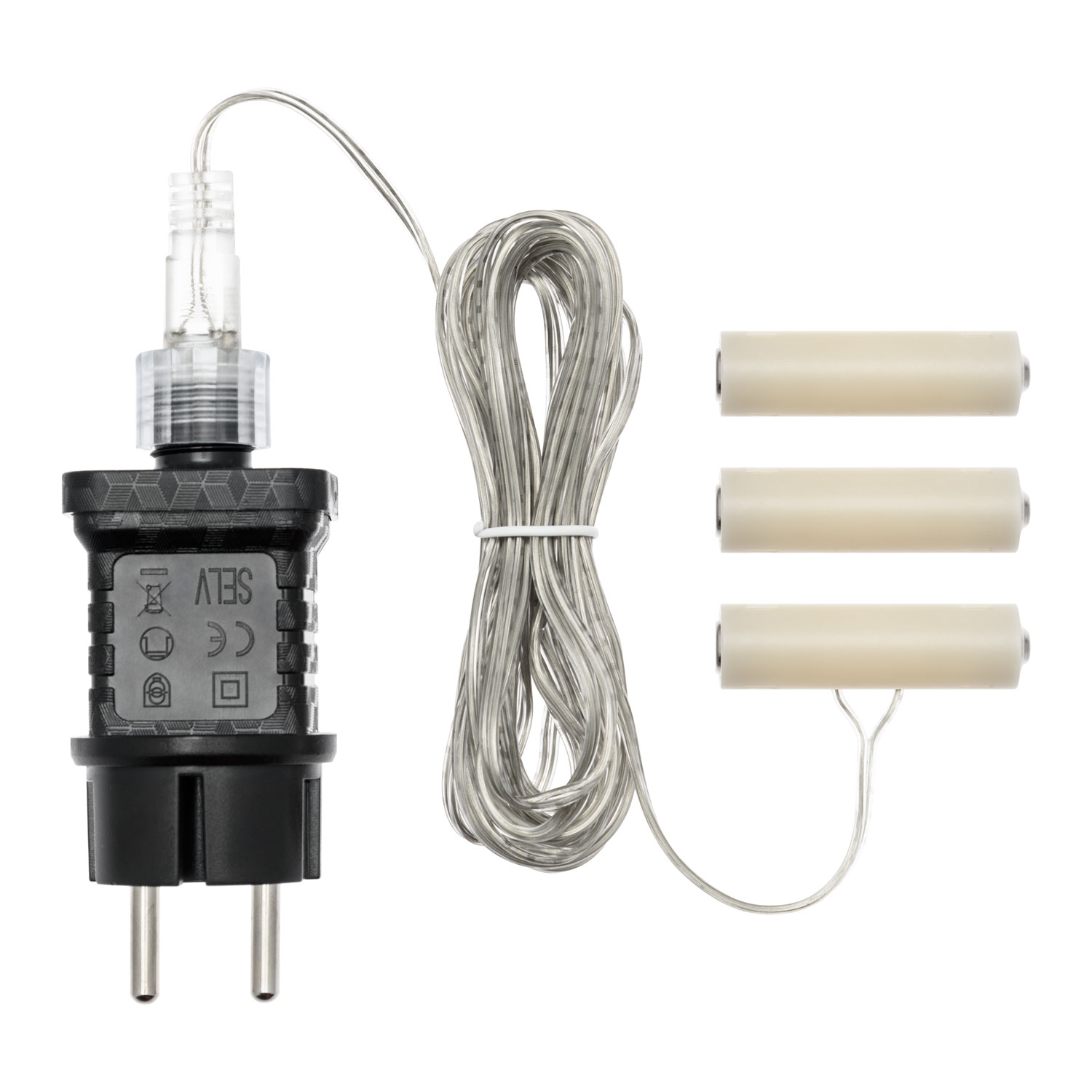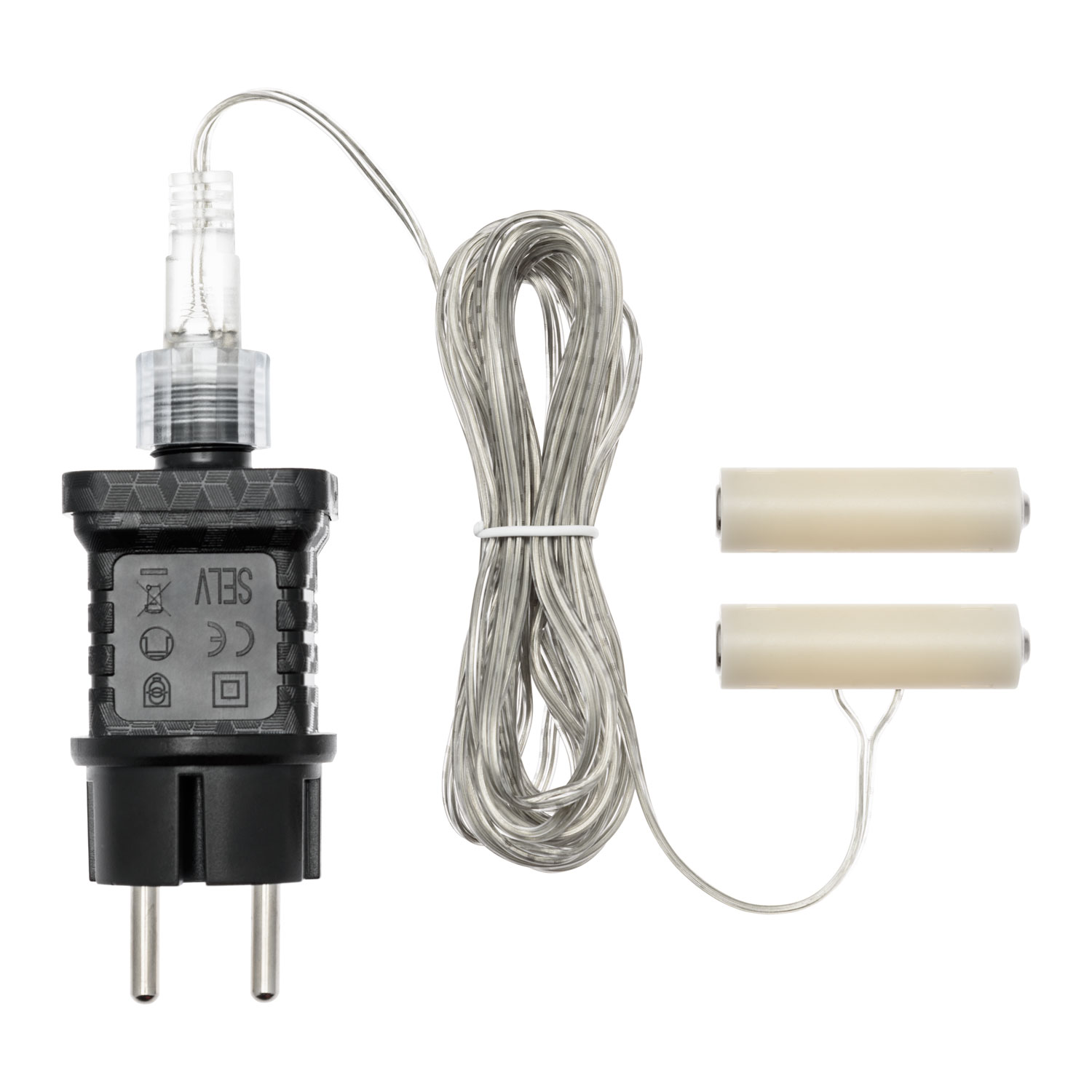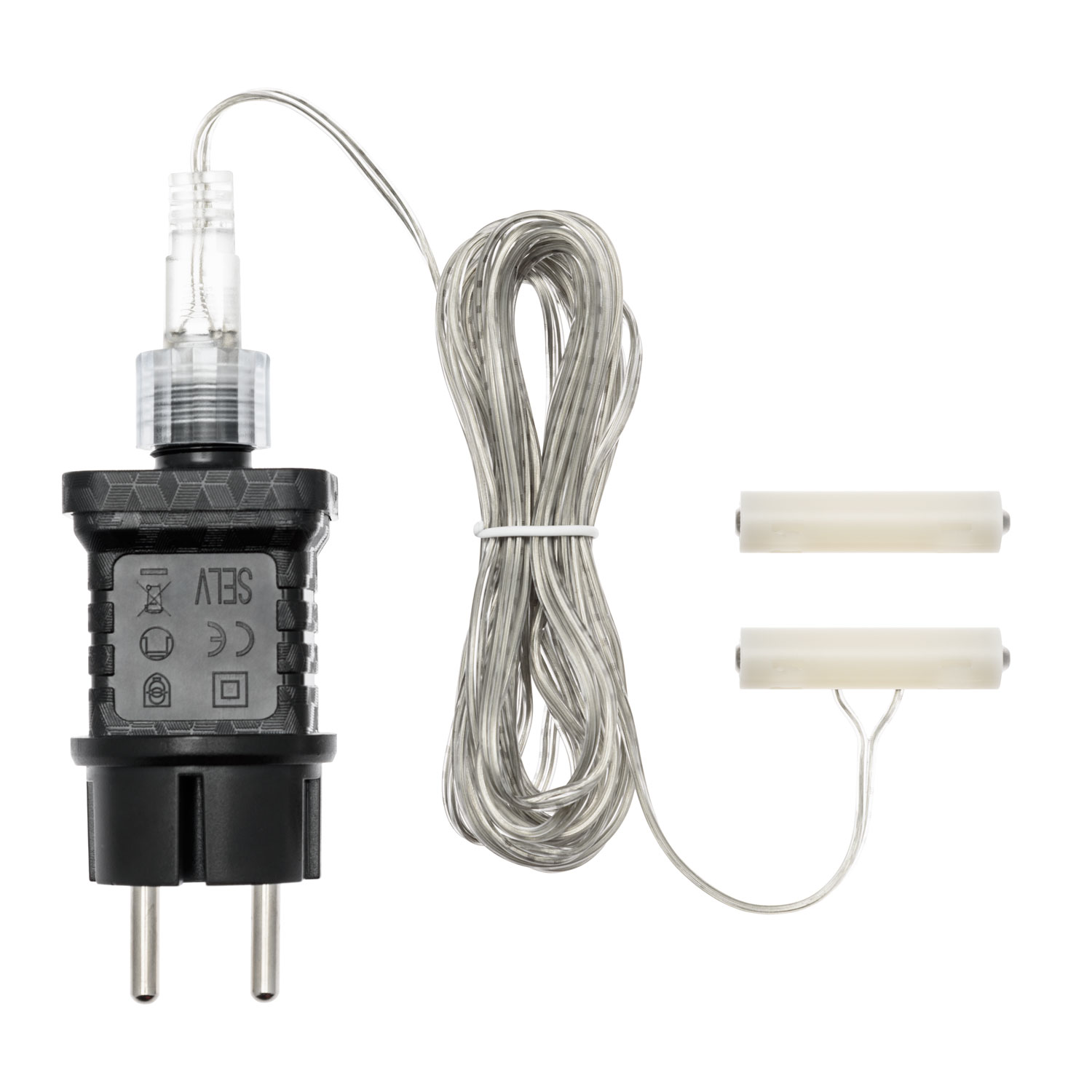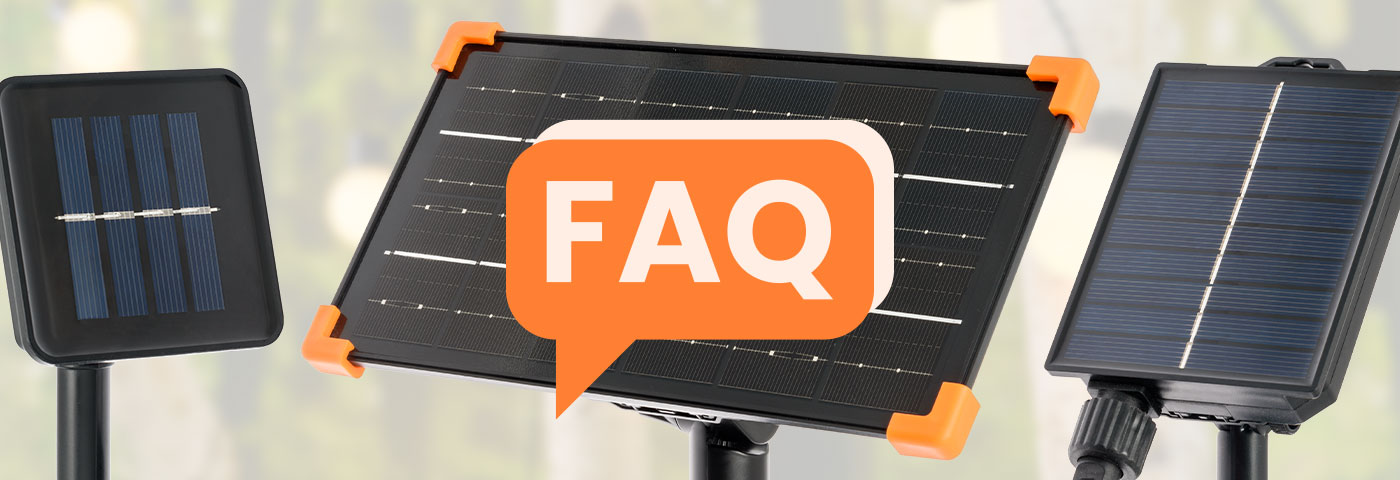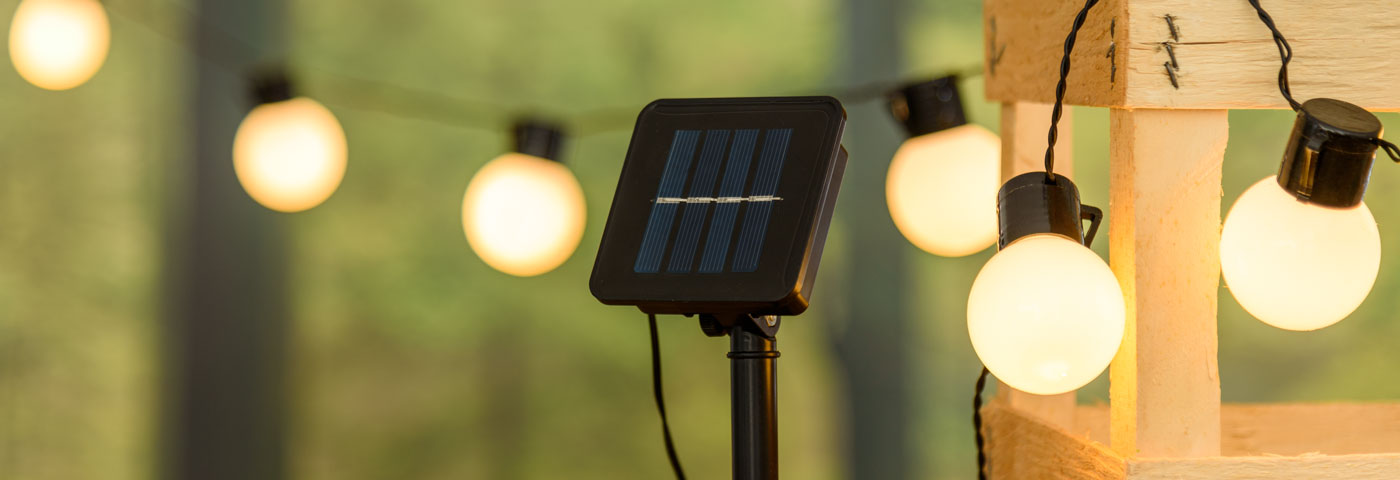Battery lights: advantages, disadvantages, common questions about the use of battery lights
Many of our customers often ask us about the advantages and disadvantages of using battery-powered decorations, and we have tried to summarise them all in the guide below.

Date
02.06.2023
Reading time
7 min
The battery-powered decorations are very convenient, because they allow you to decorate any place without worrying about the distance between the decoration and the electrical outlet, or possible dangers to property or persons.
We have tried to summarise all the advantages and disadvantages of using battery-powered decorations in this article.
How long will the lights stay on with one charge?
As you will notice, we do not indicate the lighting duration of a battery-operated decoration, as this is unfortunately dependent on many factors:
- Temperature: The temperature of the environment has a great influence on battery discharge. The lower the temperature, the faster the battery will discharge. The service life will return to normal when the battery is in a warm environment;
- Battery brand: there are brand-name batteries that can last longer than others;
- Expiry date: Batteries have an expiry date, which is usually very long (typically 10 to 15 years from the date of manufacture). The expiry date does not indicate when the battery is empty but only when it has reached about 80% of its initial charge. It can therefore be used safely but will last less;
- Rechargeable batteries: If you use rechargeable batteries, remember that their service life is a function of how many recharge cycles have been made in the past. The more times it is recharged, the less it will last.
- Selected lighting effect: If the decoration has several effects, consider that some may consume more energy than others. For example, if you choose a fixed light, you will have a higher energy consumption because all the LEDs remain on constantly.
On average, you can expect up to 50 hours of operation before the batteries need to be replaced.
How to calculate battery life?
As mentioned above, the calculation of battery life depends on several factors, the main ones being the power consumption of the decoration and the type of battery used.
We could make a calculation to roughly estimate the battery life considering only these two factors. This calculation helps us to understand the correlation between the properties of the decoration and the batteries used and what to pay attention to.
- Identifies the energy consumption of the decoration: consumption is expressed in watts (W). In some cases you may find the current consumption expressed in milliamperes (mA) or amperes (A). In the latter case you can calculate power consumption in watts using the formula: Power (W) = Voltage (V) x Current (A);
- Identify battery capacity: Battery capacity is expressed in milliampere-hours (mAh) or ampere-hours (Ah). It is usually indicated in the battery specifications or on the packaging;
- Calculate the duration: Divide the battery capacity by the power consumption of the decoration to get a rough estimate of battery life time. Use the formula: Life time (hours) = Battery capacity (mAh or Ah) / Power consumption (mA or A). Pay attention to the unit of measurement used: if for example you have mAh in the numerator, you must use mAh in the denominator.
Let's take an example of a catalogue light string, 7.2 metres long with 180 LEDs, running on 4 (AA) batteries and also incorporating a controller with light effects and steady light.
For simplicity's sake, we evaluate the duration by setting the controller to steady light, the most energy-intensive option.
For the calculation we will use 4 new Duracell Plus Power batteries.
We get the necessary information:
- Light string consumption: 0.64 watt (W);
- Light string operating voltage: 6 volts (V);
- Number of batteries: 4;
- Typical capacity of a Duracell Plus Power AA battery: 2850 milliampere-hour (mAh);
To do the calculation, we have to determine the energy consumption of the light string in mAh like this:
Power consumption (mAh) = Power (W) / Voltage (V) * 1000
and thus the value is:
Energy consumption of the light string (mAh) = 0,64 W / 6 V * 1000 = 106,7 mAh
To calculate battery life in hours at this point, we can use the formula:
Battery life (hours) = Battery capacity (mAh) * Number of batteries / Power consumption decoration (mAh)
The calculation is therefore as follows:
Battery life (hours) = 2850 mAh * 4 batteries / 106.7 mA = 106.84 hours
Note that this value is only theoretical because it considers the complete battery consumption, meaning even when the lights come on with very little intensity. It does not consider 100% light for the entire period.
To get an acceptable reference value, consider half of what the formula shows, so about 50 hours.
How bright is the light?
Battery-operated decorations do not have the same luminous intensity as their mains-powered equivalents. The light intensity is a function of the number of batteries in the product, their charge and the amount of LEDs they have to power.
Some light strings of 10 or 20 LED lights with 2 or 3 AA batteries have a light intensity comparable to mains-powered lights.
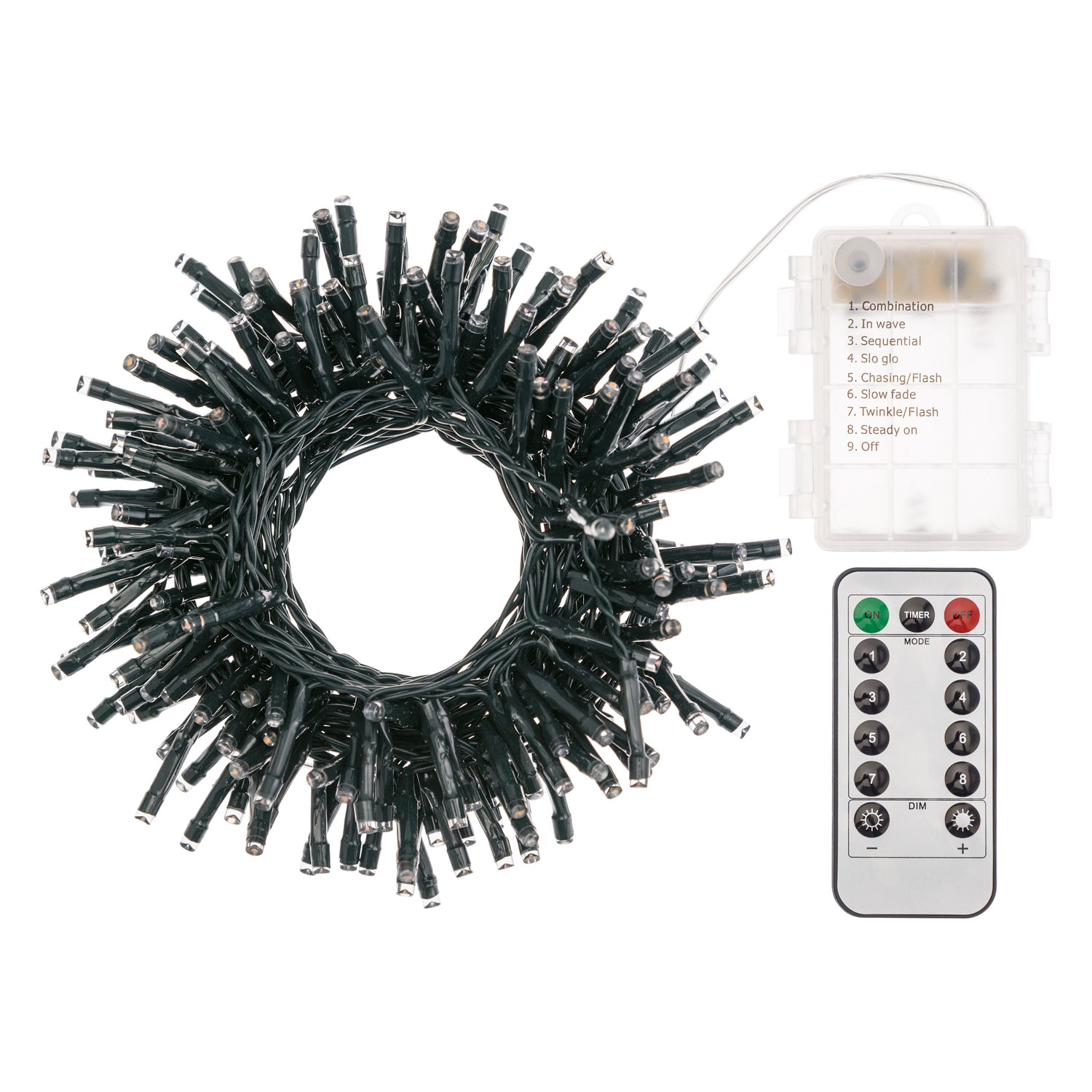
Can rechargeable batteries be used?
You can safely use rechargeable batteries, in fact, we can say that it is a good solution if you care about the environment. The use of rechargeable batteries produces much less polluting waste and this also translates into financial savings.
However, it must be considered that rechargeable batteries have a determined number of charging cycles, and they gradually lose their ability to store energy.
Are battery-powered lights safe?
Due to the fact that they have a very low electrical voltage, battery-operated lights are particularly safe. You can safely use them inside fabric or with paper decorations. Battery-operated LED lights in particular do not heat up and cannot produce dangerous electrical shorts.
Battery lights with Power Bank
The new battery lights with Power Bank are a great way to save money in the long run, thanks to the fact that you can recharge the batteries several times.
Compared to normal rechargeable batteries, no battery charger is required, but a simple power supply with USB port for mobile phones, which we all have at home by now, can be used.
But what is the longevity of power banks compared to normal batteries?
Power banks included in the decorations currently have a charge capacity of 1800 mAh. Normal AA batteries can have a charge capacity of 2200 to 2600 mAh, with ministyls we are around 1200 mAh.
It is important to note that the lights are not guaranteed to work using commercial power banks not included with the decoration.
Can I power battery lights with my home mains?
If you occasionally prefer to avoid using batteries to power your lights and wish to use the mains supply instead, you can now do so.
The new Battery Eliminator accessory is a power transformer connected to false batteries. Once inserted the false batteries into the battery holder, all you have to do is plug the transformer into the power socket to turn on the lights.
There are different types of Battery Eliminator available, depending on the size of the batteries (AA or AAA) and the number of batteries used in the decoration.
Should you still have any doubts about which lighting decoration is best for you, please do not hesitate to contact us! The Luminal Park Customer Care Team is always at your disposal.


